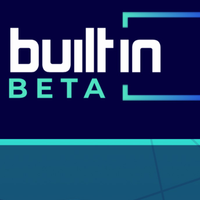Must-Know Tips for Communicating Your Employer Value Proposition
Your reputation as an employer can be a major draw when recruiting candidates to your organization. It’s here where your Employer Value Proposition (EVP) can tell the story of why employees should join your company, playing a vital role when attracting and retaining top talent.
Unfortunately, many companies make the mistake of thinking that their product brand and their EVP are one and the same. Except that they’re not. As a case in point, let’s look at Amazon.
While services like Amazon Prime and Amazon Prime Video are massively popular, the company’s work culture, on the other hand, has been described as “bruising,” where people break down crying in their desks.
So, there’s clearly a distinction between a product brand and an EVP.
From defining to communicating your EVP
Defining your EVP, however, is just the first part of the equation. Even if you were somehow able to come up with the most eloquent and convincing EVP, there’s still the matter of communicating it with your audience.
Most companies do this by creating a separate page on their website called “About Us,” “Our Team,” or perhaps “Who We Are.” While important, these pages assume that your candidates are out there actively looking for information on your site.
In reality, though, your candidates are more likely to be on social media sites, job boards, and even industry events. That means you need to reach them where they are.
You can actively communicate your EVP following these best practices:

1. Identify relevant social networks
Of the many social networks that can be used to communicate your EVP, the top four are Facebook, LinkedIn, Twitter, and Instagram. But it’s neither necessary nor practical to be active on all of them.
Ideally, you should first create candidate personas, which will help you get a sense of where your target talents are likely to be online. An accounting firm, for example, will likely be better off looking for leads on LinkedIn. A retail company looking for multimedia content producers, on the other hand, can look at Instagram for candidates sharing their portfolios.
Once you have an idea of which social networks are relevant to your company, you can then conduct social listening to see what kind of content your audience wants to see (more on this later).

2. Cultivate a culture of brand advocacy
Faster hiring, faster learning, and faster onboarding—these are just a few of the benefits of hiring through employee referrals. Unsurprisingly, referrals also offer an efficient way to spread the word about your EVP.
With proper motivation (e.g. incentives and rewards), your employees can be the perfect ambassadors for your brand as an employer, giving your company a direct line to their personal network of active and passive job seekers.
Of course, this strategy is entirely dependent on your employees actually knowing what your company’s EVP is. If anything, this raises the point that communicating your EVP applies just as much to internal stakeholders as it does to people outside the organization.

3. Join or organize events
Events are about as traditional as you can get when marketing your EVP, but that’s because they still work. Whether you’re joining a networking session, sponsoring a developer workshop, or organizing a corporate social responsibility activity, these events provide an opportunity to share your company’s values, beliefs, and culture.
The effectiveness of your participation in these events, however, boils down to whether or not they’re actually relevant to your organization.
It also pays to think about your goals with these events. If the plan is to communicate your EVP, it may better to focus on building relationships with other companies and professionals or tackling industry issues and ideas, rather than approach the event from a purely recruitment perspective.

4. Create share-worthy branded content
One way to help employees make employee referrals for your organization is to provide content with your EVP, which they can share on their personal networks. Examples of branded content you can create include social content, website pages, blogs, employee interviews, case studies, and videos among others.
To increase diversity and authenticity, companies can also encourage employees outside of the marketing department to create their own content, which gives it a more personal and authentic touch.
For example, different teams can create ‘day in the life’ videos or Q&A podcasts to establish the company brand and show the organization’s dynamic and progressive work culture.
Work with other publications to have your content published. You can also write a guest post for other blogs or join someone else’s podcast as an interviewee. Of course, remember to share your content on your own company blog, and select a video that you can add to your company profile on job listing platforms.
Winning the talent war
According to Gallup, an overwhelming majority (87 percent) of employees globally are not engaged at work, and companies are not even aware they are experiencing a crisis of engagement.
Communicating the company’s EVP in all hiring efforts of the organization becomes a critical priority, as businesses are losing due to hiring inefficiency.
When integrated into all aspects of a business, a strong EVP will help you retain top performers and attract the best talent.
Stay tuned for our next article on how you can leverage multiple tools that can help you perform various tasks such as social media listening, reaching out to potential candidates, optimizing your career page and many more.
Be there or be square!

Enjoyed reading this article? It’s even better in our app. Download the Wantedly Visit app now on Google Play or the App Store.


)/assets/images/7053115/original/43c7433b-4920-4cf1-b0b0-c44aec7bd947?1624242511)





/assets/images/7053115/original/43c7433b-4920-4cf1-b0b0-c44aec7bd947?1624242511)